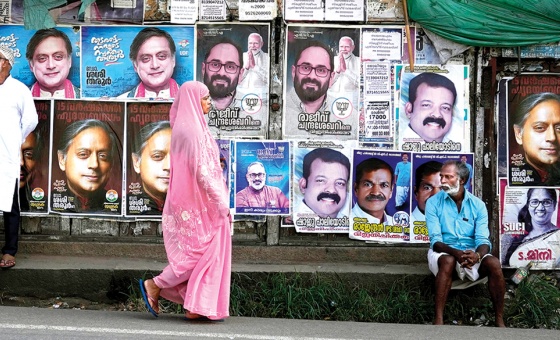This is the last article you can read this month
You can read more article this month
You can read more articles this month
Sorry your limit is up for this month
Reset on:
Please help support the Morning Star by subscribing here
CAMPBELL PRICE is one of the great communicators on all things ancient Egypt — check out his excellent YouTube seminar on the subject and you’ll see why — and his interest in that ancient world was first piqued at a very young age at the Kelvingrove Museum in his native Glasgow.
“The perfume of antiquity” which pervaded the Egyptian objects on display drew him in: “I’ve been hooked ever since,” he says. He’s Curator of Egypt and Sudan at the Manchester Museum, which houses one of Britain’s largest Egyptology collections, and he has just published a new book Mummies of Egypt, which investigates the colonial acquisition of Egyptian antiquities and the ways in which they have been interpreted in the Western world.
Despite an outstanding academic track record, he admits to taking a “somewhat childish” sense of excitement forward into a career in Egyptology. “Egyptian colleagues tend to develop an interest slightly later in life and have a somewhat more mature attitude to the subject compared to many non-Egyptian Egyptologists,” he says.
“Any student, of any subject, bases at least part of their interpretation on their own upbringing; it isn’t a failing to admit that. Some colleagues could learn from that, I think.
“Egyptology encompasses a vast range of different specialisms and, in seeking to understand a different culture, it is a valuable addition to the humanities, not least because there is such a vast amount of heritage in Egypt itself.”
In a recent blog post, Campbell insisted that while Egyptologists should be in the business of trying to understand the ancient Egyptians and share their findings and interpretations, they ought also to be honest and open about their own preconceptions.
“Egyptology exists under the shadow of — and to an extent perpetuates — the foundational opinions of white, upper and middle-class European men,” he explains.
“They have shaped the discipline, such as it is, and it is a lot of work to critique and unthink many of the assumptions that underlie even the most well regarded university teaching of Egyptology today.”
For most, ancient Egypt is simply reimagined in the image of the beholder and the dominant narrative is “a sort of proto-British empire, with hierarchies and terminology used to describe ancient-life worlds mapped onto those the ‘founding fathers’ understood.”
Thus “viceroys” and even “durbars” [the courts of Indian rulers] are described as taking place in the second millennium BC and, he says, it is interesting that when Egypt was ruled by the Greeks and Romans “that sort of multiculturalism is difficult for the imperial British mentality to process.”
Ancient Egypt, as the blurb for his new book explains, is popularly synonymous with gold, sex, art and death. But Price questions to what extent these concepts are representative of ancient concerns or realities and how modern interpreters may shape the ancient past to fit a narrative attractive to themselves and their audiences.
Unlike ancient Greece and Rome, there are few contemporary commentaries about political and social events from ancient Egypt but there are some written accounts which have incidental details about social conditions, including the first recorded strike in human history.
For Price, how the ancient audience interacted with what are today museum pieces is a source of fascination. The statues often have hieroglyphic texts on them telling how they ought to be “used” — an example is one asking passers-by to leave offerings and even clean the monument — and he has translated some of them for a book slated for publication next year.
The elite vs non-elite in Egyptian archaeology, a focus of his new book, is an age-old issue. “Elite contexts tend to be richer and yield more written — therefore more “historical” — evidence and to have more display-worthy objects,” he says.
“Non-elite contexts — modest burials and mud-brick houses — simply don’t survive the depredations of time nearly as well as those built of stone, designed for maximum display, for the gods, for eternity. Thus, museums don’t show anything like a cross-section of society but rather focus on rich dead people.
“But does this mean that the non-elite — by far the majority of the population would seem to have been working on the land — were aesthetically deprived or is this an argument for silence? I attempt to address the question of audience in my next book on elite sculpture which — surprise, surprise — seems to have been intended for a restricted, elite audience.”
He is clear that we don’t need more royal tombs, we need “closed contexts” — an undisturbed settlement or ritual deposit — which might furnish more direct insight into how objects were at least originally associated, if not actually used, and provide insights into social practice.
A problem for Price is that museums don’t transmit facts, they create them and “all museum visions are skewed in some sense. The surviving evidence is biased towards the rich dead and curators can only try to order the material they have at their disposal to give a narrative meaningful to a modern museum audience.”
One such narrative is that of Hatshepsut and Senenmut. In response to the inevitable question about what ancient Egyptian site he would visit if he could travel back in time, he picks out Deir el-Bahri, a complex of mortuary temples and tombs opposite Luxor on the west bank of the Nile.
It’s the site of an impressive temple of Hatshepsut, Egypt’s most successful female Pharaoh from c1479 to 1458 BC, “proving that women could rule a powerful ancient polity,” Price says.
“Senenmut, her chief official, was something like an ancient Egyptian Michelangelo. He was an innovator, a designer and, intriguingly, apparently unmarried — leading to suggestions of a royal romance.
“He left behind lots of monuments, largely as a result of the queen’s favour, so there’s a lot of evidence to base speculations on — a historian’s dream!”
Golden Mummies of Egypt: Interpreting Identities From the Graeco-Roman Period, price £25, is available at the Manchester Museum online shop: manchestermuseumshop.co.uk/books-and-prints/golden-mummies-of-egypt











